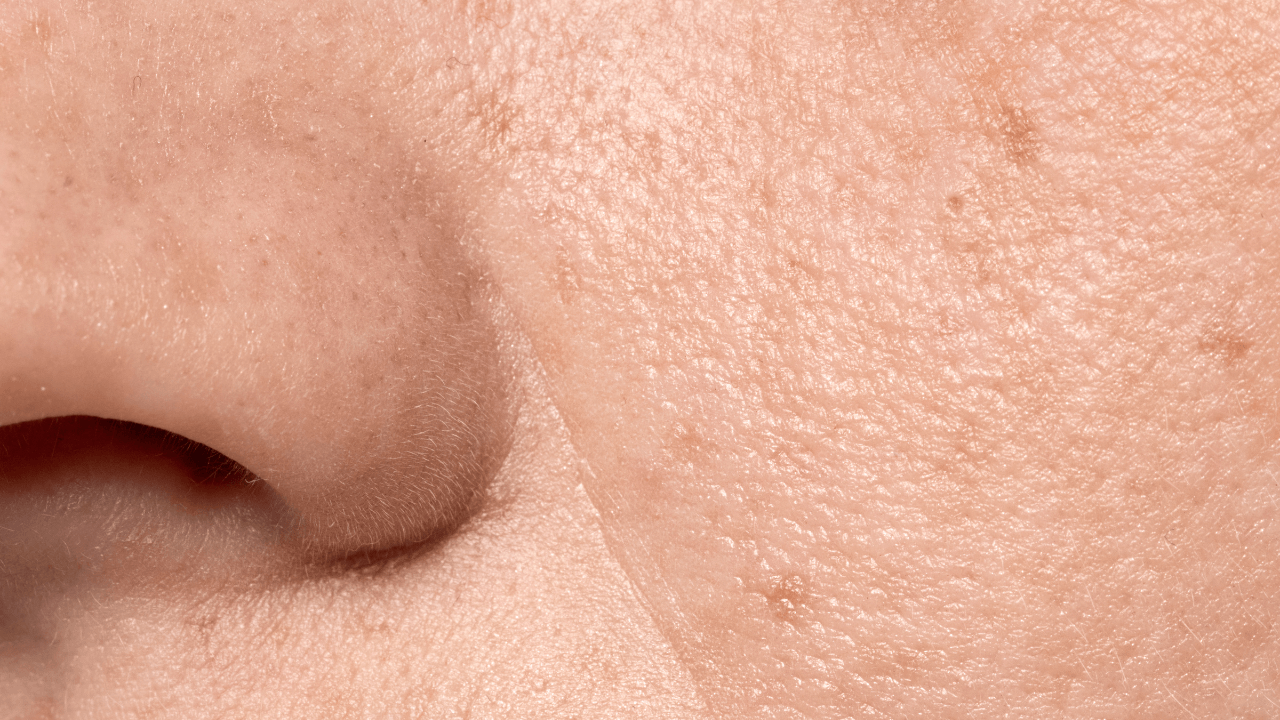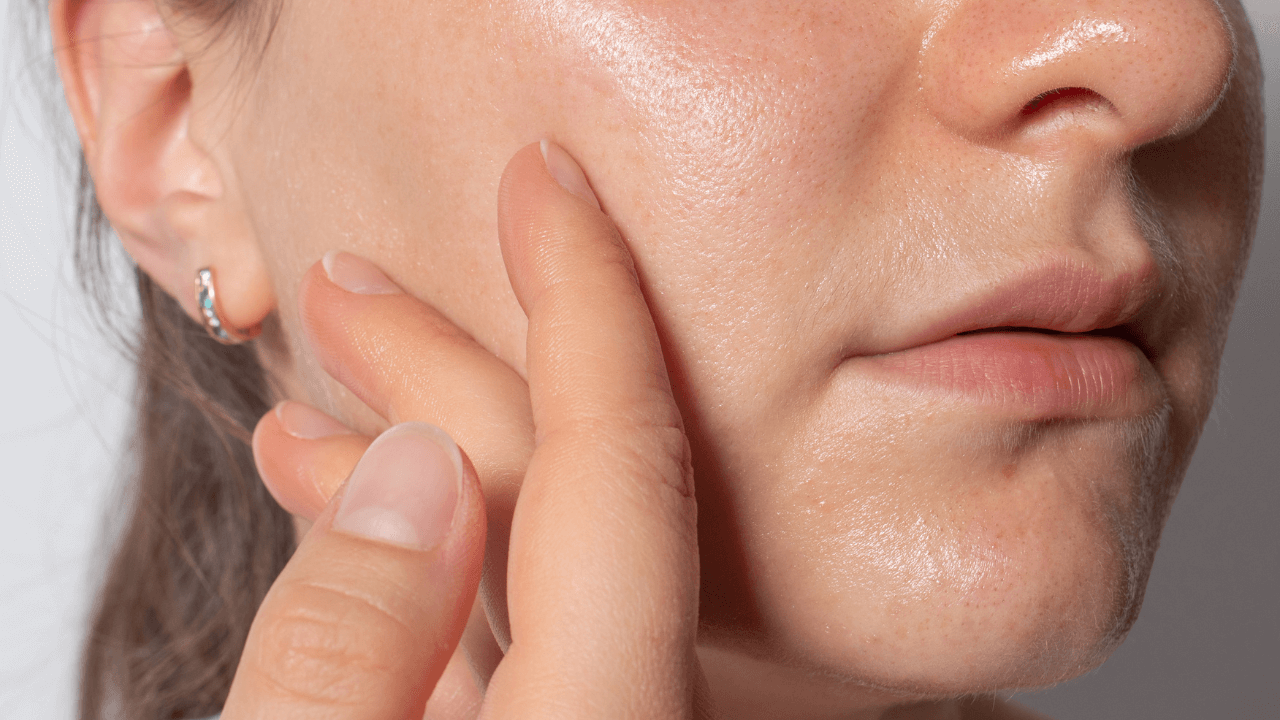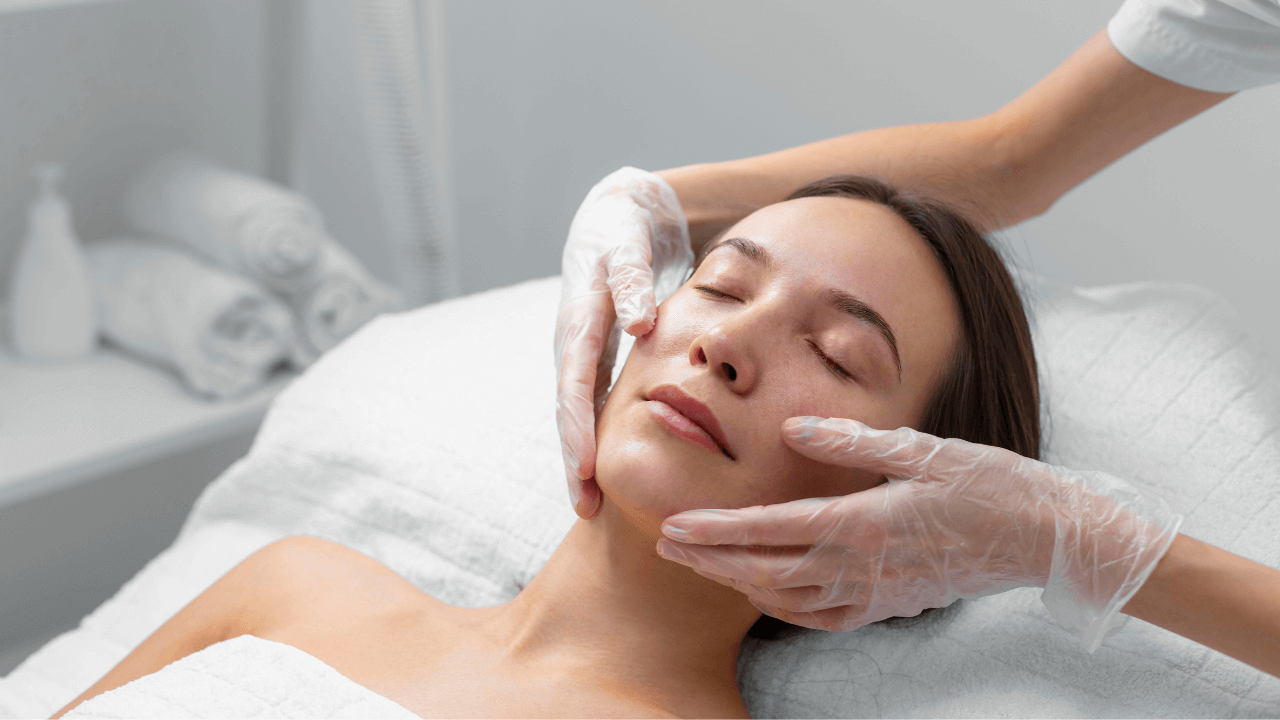Post-acne marks can be one of the most frustrating reminders of past breakouts, lingering long after the original pimples have healed. These stubborn marks can affect your confidence and make you feel like your acne journey never truly ends. The good news is that with the right understanding and treatment approach, post-acne marks can be significantly improved and, in many cases, eliminated.
Understanding Post-Acne Marks
Post-acne marks, also known as post-inflammatory hyperpigmentation (PIH) or post-inflammatory erythema (PIE), are discolored spots that remain after an acne lesion has healed. Unlike active acne, these marks are flat against the skin and don't contain pus or become inflamed. They're essentially your skin's response to the inflammation that occurred during the breakout.
These marks can appear as dark spots, red marks, or brown patches, depending on your skin tone and the type of mark. While they're not harmful to your health, they can be cosmetically concerning and may take months or even years to fade naturally without intervention.
It's important to distinguish post-acne marks from acne scars, which are structural changes in the skin that create depressions, raised areas, or textural changes. Marks are purely pigmentation issues and are generally easier to treat than true scarring.
Types of Post-Acne Marks
Understanding the different types of post-acne marks is crucial for choosing the most effective treatment approach.
Post-Inflammatory Hyperpigmentation (PIH) appears as dark brown, black, or gray spots and is more common in people with medium to dark skin tones. PIH occurs when the inflammatory process triggers excess melanin production in the affected area. These marks tend to be more stubborn and can take longer to fade, but they respond well to specific lightening ingredients.
Post-Inflammatory Erythema (PIE) presents as red or pink marks and is more frequently seen in people with lighter skin tones. PIE is caused by dilated or damaged capillaries beneath the skin's surface. These marks often appear more prominent immediately after a breakout and may fluctuate in visibility depending on temperature, emotions, or physical activity.
Some people may experience both types of marks simultaneously, creating a combination of red and dark spots across their face or body. The treatment approach may need to address both types for optimal results.
What Causes Post-Acne Marks?
Post-acne marks develop as a natural part of your skin's healing process after inflammation. When acne occurs, your immune system responds by sending inflammatory cells to fight the bacteria and heal the damaged tissue. This inflammatory response, while necessary for healing, often triggers changes in pigmentation or blood vessel structure.
Melanin overproduction occurs when inflammation stimulates melanocytes (pigment-producing cells) to create excess melanin. This excess pigment gets deposited in the skin, making the dark spots characteristic of PIH. The deeper the original acne lesion and the more inflammation it caused, the more likely it is to leave behind a dark mark.
Vascular changes happen when inflammation damages tiny blood vessels or causes them to dilate. This creates the red or pink appearance of PIE marks. Sometimes these vessels remain dilated long after the acne has healed, or new vessels form during the healing process.
Picking and manipulation significantly worsen both the likelihood and severity of post-acne marks. When you squeeze, pick, or otherwise manipulate acne lesions, you increase inflammation and can drive infected material deeper into the skin, leading to more pronounced marking.
Individual factors also play a role. People with darker skin tones are more prone to PIH due to higher baseline melanin production, while those with fair skin may be more susceptible to PIE. Genetics, age, and overall skin health also influence how your skin responds to acne inflammation.
Prevention: Your First Line of Defense
Preventing post-acne marks is often easier and more effective than treating them after they've formed. The key is addressing acne promptly and avoiding behaviors that increase inflammation.
Treat acne early and effectively to minimize the inflammatory response that leads to marking. Don't wait for acne to resolve on its own—the longer inflammation persists, the more likely you are to develop marks. Use appropriate acne treatments consistently and consult a dermatologist for persistent or severe breakouts.
Never pick, squeeze, or manipulate acne lesions. This is perhaps the most important prevention strategy. Picking not only increases inflammation but can also introduce bacteria and drive infected material deeper into the skin. If you must extract a whitehead, do so only after it has fully come to a head, using clean tools and gentle pressure.
Use sun protection religiously. UV exposure can darken existing marks and make them more persistent. Apply broad-spectrum SPF 30 or higher daily, even on cloudy days, and reapply throughout the day. Consider physical sunscreens containing zinc oxide or titanium dioxide, which provide excellent protection without potentially irritating active breakouts.
Maintain a consistent, gentle skincare routine that supports skin healing without adding irritation. Over-cleansing or using too many active ingredients can increase inflammation and potentially worsen marking.
Treatment Options for Post-Acne Marks
The treatment approach for post-acne marks depends on the type of marks you have, your skin tone, and the severity of the discoloration.
Topical Treatments for PIH
Vitamin C is a powerful antioxidant that can help fade dark marks by inhibiting melanin production and promoting skin cell turnover. Look for stable forms like magnesium ascorbyl phosphate or sodium ascorbyl phosphate, and use concentrations between 10-20% for optimal effectiveness.
Hydroquinone is considered the gold standard for treating hyperpigmentation. Available in 2% concentrations over-the-counter or up to 4% by prescription, hydroquinone works by inhibiting the enzyme responsible for melanin production. Use it consistently for 3-4 months, then take a break to prevent potential side effects.
Retinoids accelerate skin cell turnover, helping to bring pigmented cells to the surface more quickly, where they can be shed naturally. Start with over-the-counter retinol products, or ask your dermatologist about prescription tretinoin for more dramatic results.
Alpha Hydroxy Acids (AHAs) like glycolic and lactic acid provide gentle exfoliation that can help fade surface-level pigmentation. They also improve skin texture and can enhance the penetration of other lightening ingredients.
Kojic acid is a natural skin lightener derived from fungi that can be effective for PIH. It's often combined with other lightening agents for enhanced results and is generally well-tolerated by most skin types.
Niacinamide (Vitamin B3) helps regulate melanin production and can be particularly effective when combined with other treatments. It's also anti-inflammatory, which can help prevent new marks from forming.
Treatments for PIE
Niacinamide is also effective for PIE marks due to its anti-inflammatory properties and ability to strengthen the skin barrier, potentially helping damaged capillaries heal more effectively.
Azelaic acid has both anti-inflammatory and mild exfoliating properties, making it useful for both PIE and PIH. It's particularly good for sensitive skin and can be used long-term without the restrictions associated with hydroquinone.
Centella asiatica and other anti-inflammatory botanical ingredients can help calm redness and support the healing of damaged blood vessels.
Arnica and vitamin K are sometimes used in topical formulations specifically designed to address redness and broken capillaries, though scientific evidence for their effectiveness is limited.
Professional Treatments
Chemical peels can be highly effective for both PIH and PIE. Superficial peels using glycolic acid, lactic acid, or salicylic acid can be done regularly to gradually improve marking. Medium-depth peels may be recommended for more stubborn marks but require more downtime.
Microneedling stimulates collagen production and can help improve both pigmentation and redness by promoting skin renewal and potentially helping damaged vessels heal.
Laser treatments offer targeted approaches for different types of marks. IPL (Intense Pulsed Light) can be effective for both pigmentation and redness, while Q-switched lasers specifically target pigment. Vascular lasers like PDL (Pulsed Dye Laser) are particularly effective for PIE.
LED light therapy using red or near-infrared light may help reduce inflammation and promote healing, though results are typically subtle and require multiple sessions.
Building an Effective Treatment Routine
Creating a routine that addresses post-acne marks while maintaining overall skin health requires careful planning and patience.
Morning routine should focus on protection and gentle treatment. Start with a mild cleanser, apply a vitamin C serum to address pigmentation, follow with a lightweight moisturizer, and always finish with broad-spectrum sunscreen. If you're using hydroquinone, apply it in the morning under sunscreen.
Evening routine is when you can use stronger active ingredients. After cleansing, apply treatments like retinoids, AHAs, or prescription lightening agents. Always follow with a moisturizer to prevent irritation and support skin barrier function.
Weekly treatments might include gentle exfoliation or a clay mask to keep pores clear and prevent new breakouts that could lead to additional marks.
Gradual introduction of new ingredients is crucial to prevent irritation. Start with one new active ingredient at a time, using it every other day initially, then gradually increasing frequency as your skin tolerates it.
Managing Expectations and Timeline
Treating post-acne marks requires patience and realistic expectations. PIH typically takes 3-6 months to show significant improvement with consistent treatment, while PIE may fade more quickly, often within 2-4 months. However, some stubborn marks may take up to a year or more to fully resolve.
Factors affecting treatment timeline include the age and depth of the marks, your skin tone, the treatment methods used, and your consistency with the routine. Newer marks generally respond faster than older ones, and surface-level pigmentation fades more quickly than deeper discoloration.
Monitoring progress can be challenging since improvement is often gradual. Take photos in consistent lighting every few weeks to track changes that might not be obvious day-to-day. Keep a skincare journal to note which products seem most effective.
A combination approach often yields the best results. Using multiple treatments that work through different mechanisms can be more effective than relying on a single ingredient, though it's important to introduce combinations gradually to avoid irritation.
Common Mistakes to Avoid
Several common mistakes can slow progress or worsen post-acne marks.
Over-treatment is one of the biggest pitfalls. Using too many active ingredients too quickly or too frequently can cause irritation, which may increase pigmentation and prolong healing time. More is not always better when it comes to treating post-acne marks.
Inconsistent sunscreen use can undo months of progress. UV exposure not only darkens existing marks but can make them more resistant to treatment. Make sunscreen a non-negotiable part of your routine.
Expecting immediate results leads to frustration and often causes people to abandon effective treatments prematurely. Skin cell turnover takes time, and pigmentation changes occur gradually.
Continuing to pick at skin during treatment undermines your efforts and can create new marks. If you struggle with choosing, consider keeping your hands busy, wearing gloves, or seeking support for this habit.
Using products not suited for your skin tone can be problematic. Some treatments work better for certain skin tones, and using inappropriate treatments can sometimes cause additional pigmentation issues.
Special Considerations for Different Skin Tones
Treatment approaches may need to be modified based on your skin tone and type.
Darker skin tones are more prone to PIH and may need more aggressive lightening treatments, but they're also at higher risk for developing additional pigmentation from irritating treatments. Start slowly with lower concentrations and prioritize gentle, consistent care.
Lighter skin tones may see faster results with PIH treatments but might struggle more with persistent PIE. Focus on anti-inflammatory ingredients and consider professional treatments that target vascular issues.
Sensitive skin of any tone requires extra caution. Choose gentle formulations, introduce new ingredients slowly, and consider products specifically designed for sensitive skin.
When to Seek Professional Help
While many post-acne marks can be improved with over-the-counter treatments, certain situations warrant professional consultation.
See a dermatologist if marks haven't improved after 3-4 months of consistent treatment, if you're dealing with very dark or extensive marking, if you're unsure whether you're dealing with marks or scars, or if over-the-counter treatments are causing irritation or worsening the condition.
A skincare professional can provide stronger prescription treatments, professional procedures, and personalized treatment plans based on your specific skin type and concerns.
Living with Confidence During Treatment
Treating post-acne marks is a journey that requires patience and self-compassion. While you're working on fading existing marks, remember that makeup can provide temporary coverage for special occasions or when you need an extra confidence boost.
Focus on the progress you're making rather than perfection. Even small improvements in marking can make a significant difference in how your skin looks and feels. Celebrate these victories while staying committed to your long-term treatment plan.
Remember that clear, even-toned skin is achievable for most people with the right approach and sufficient time. Stay consistent with your routine, protect your skin from further damage, and be patient with the process. Your dedication to proper treatment will pay off with smoother, more even-toned skin that you can feel confident about.
The journey to clear skin doesn't end when acne stops—but with the right knowledge and treatments, post-acne marks don't have to be a permanent reminder of past breakouts.





